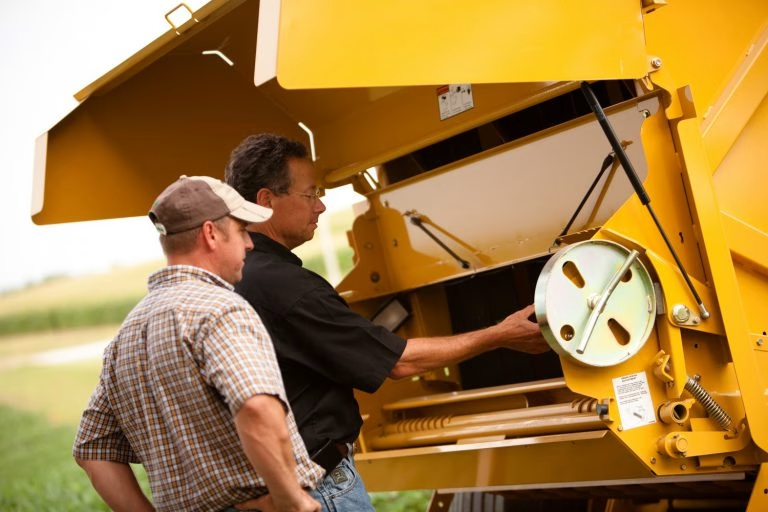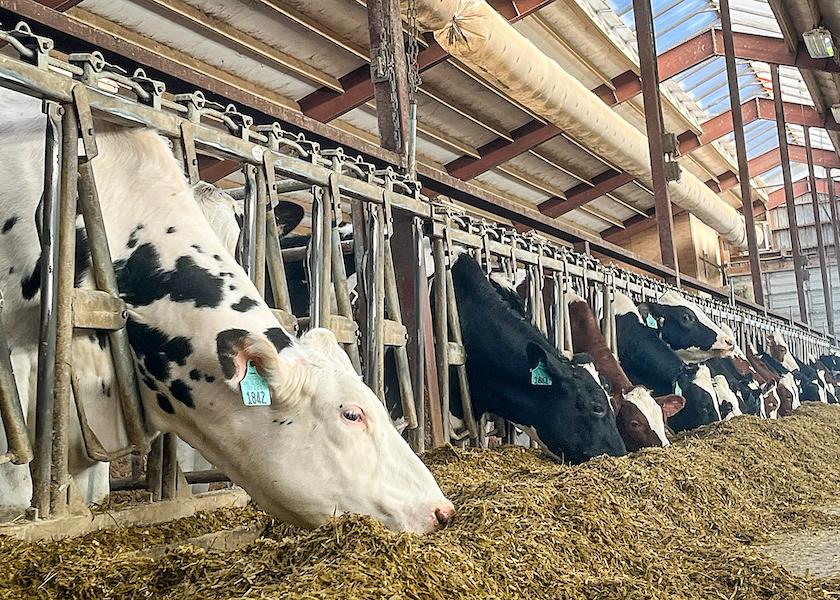Maximize your hay harvest efficiency with our essential maintenance checklist. Are you ready to ensure smooth operations and prevent costly downtime this season?

As a farmer, you understand that the hay season is a critical time where efficient operations are paramount for productivity. This comprehensive maintenance guide for hay equipment is designed to help you maximize your efforts by ensuring that every piece of equipment functions seamlessly. Regular maintenance checks, although they may seem daunting during the busy season, are essential to minimize downtime and prevent costly breakdowns. This guide provides a checklist to help you spot potential issues early, allowing you to focus on harvesting your hay efficiently.
The Essential Role of Maintenance in Ensuring Hay Season Efficiency
Regular maintenance checks are not just routine formalities; they are your key to efficient hay operations. By preventing unexpected downtimes and costly repairs, you take control of your equipment’s performance during the critical hay season. Each moment counts, and a single machinery breakdown can lead to significant productivity losses. Comprehensive inspections of all hay equipment should be a priority to catch issues early and stay in control of your operations.
Lubrication is essential for reducing friction and wears on joints and moving parts. By applying the right lubricants, you ensure smoother operation, extend the equipment’s lifespan, and enhance operational efficiency. This is vital for maintaining consistent output during the harvest season.
Hydraulic systems must be checked for leaks or damages in hoses and connections. Hydraulics are vital in lifting, maneuvering, and powering cutting and baling mechanisms. A well-maintained hydraulic system ensures precision and reliability. Early detection of wear or damage allows for timely repairs, preventing failures that could disrupt your harvesting schedule.
In summary, adopting a proactive approach to maintenance—focusing on lubrication and hydraulic system inspections—keeps your hay equipment in optimal condition throughout the season. By establishing a routine for these tasks, you can ensure a successful and efficient harvest, sustaining productivity and extending the life of your machinery. This approach not only maximizes your productivity but also minimizes the risk of unexpected downtime, making it a crucial part of your hay season strategy.
Ensuring the Reliability of Your Machinery: The Vital Role of Fluid and Filter Checks During Hay Season
Maintaining the reliability of tractors and hay equipment during the hay season requires diligent fluid and filter checks. Monitoring oil and coolant levels is crucial as these fluids ensure lubrication and prevent excessive heat, which could otherwise lead to equipment failure. Neglecting these areas can lead to decreased efficiency and costly repairs, compromising the productivity of your hay harvest.
Check oil and coolant levels regularly to ensure they meet the required specifications. Oil provides a protective layer that reduces friction and wears on moving parts, thereby extending the lifespan and maintaining optimal performance. Coolant prevents overheating, safeguarding the engine and other critical components from thermal damage.
Filters are equally important in maintaining the purity of both oil and air. Oil filters prevent contaminants from circulating through the engine, ensuring that only clean oil reaches moving parts. Air filters keep dust and debris out of the engine, maintaining air quality and preventing clogs that could impede performance. Regularly checking and replacing these filters is essential for machinery efficiency and reliability.
Ensuring optimal lubrication and filtration enhances operational efficiency and significantly reduces the risk of unplanned downtime. Make it a routine practice to inspect these components before each use, especially during peak hay harvesting periods. This proactive approach will help identify and fix minor issues before they escalate, maximizing productivity for a successful hay season.
Tire Maintenance: Ensuring Optimal Performance and Safety During Hay Season
Ensuring tire pressure matches manufacturer recommendations is not just a task; it’s a crucial step to avoid wear and potential failure. Use a reliable gauge to measure pressure in all tires, including the spare, and adjust according to the equipment manual. Frequent checks are recommended, especially with temperature changes. This ensures that your equipment is always ready to perform, giving you the assurance of a smooth hay season.
Next, inspect tread wear using a depth gauge to confirm it meets safety standards. Uneven wear can signal misalignment or improper inflation. Consistent tread depth across the tire is essential. Pay attention to signs of punctures, cuts, bulges, or excessive wear—addressing these early can prevent costly downtime during the hay season.
Prioritizing Safety: The Cornerstone of Efficient and Secure Hay Harvesting Operations
Safety features are not just add-ons; they are your partners in operational efficiency and worker protection during hay season. Ensuring that all safety shields and guards are in place and functioning correctly is vital, as they provide a secure environment against a range of injuries and accidents. Additionally, rigorous testing of emergency stop buttons and kill switches is essential, as these controls provide immediate intervention in hazardous situations, giving you the confidence to handle any situation.
Lighting systems, including headlights, taillights, turn signals, and warning beacons, are also critical in the maintenance routine. These systems ensure high visibility of machinery, thus reducing collision risks and enhancing safety, particularly in low-light conditions. A well-stocked first-aid kit with essential supplies can provide immediate care during unexpected incidents, mitigating injury severity. A proactive approach to safety features not only safeguards operators but also boosts overall productivity and smoothes hay harvesting operations.
The Integrity of Your Mower: Paramount for an Efficient Hay Season
Maintaining your mower’s integrity is crucial for a successful hay season. Start by inspecting mower blades for wear, damage, or dullness. Replace any compromised blades to ensure a clean cut and protect the mower’s components.
Ensure the cutter bar is aligned correctly to avoid uneven cutting and reduce stress on the mower deck. Regular checks and realignment can significantly improve cutting quality and extend equipment lifespan.
Inspect and adjust skid shoes to maintain the desired cutting height and protect the mower deck from damage. Properly adjusted skid shoes ensure a uniform cutting height and enhance overall efficiency and hay quality.
Rake Maintenance: The Backbone of Seamless Hay Season Operations
Rake maintenance is crucial to a smooth hay season. Start with a detailed inspection of each rake, focusing on teeth and tines for wear or damage. Replace any compromised components promptly to ensure even raking.
Pay close attention to wheel bearings, checking for abnormal temperatures and ensuring proper height adjustments. Overheating can signal lubrication issues, and correct height adjustments are essential to efficient operation.
Adjust wind guards to enhance windrow formation. Proper alignment helps minimize hay loss and maintain consistent, well-formed windrows, ultimately boosting baling efficiency.
Ensuring Baler Longevity: The Cornerstone of Productive Hay Harvesting
Balers require thorough maintenance to ensure efficient and reliable hay harvesting. Start by inspecting the baler for wear or damage, focusing on moving parts and structural components. Next, regularly check belt tension. Improper belt tension can result in poorly formed bales, causing operational issues and wasted hay.
Monitoring bale chamber pressure is essential. Ensure it meets the manufacturer’s specifications to avoid misshapen or improperly sized bales. Inspect the knotter or net wrap mechanisms, keeping them free from debris and ensuring they function smoothly.
Additionally, examine the loader arms for signs of stress or fatigue. Structural integrity is vital to prevent mechanical failures. Look for distortions or stress marks, particularly in high-pressure areas. Regular inspections maximize your baler’s lifespan and performance, aiding a successful hay season.
Maintaining Safety Equipment: A Proactive Approach to Operator Well-Being and Efficient Harvesting
It is vital to regularly inspect your safety equipment. Ensure seat belts, lights, and backup alarms are all in working order. Visual checks for wear can catch issues before they become serious. Listen for abnormal sounds from machinery, which can signal problems needing prompt attention. This proactive maintenance approach protects operators and sustains the harvest’s efficiency and reliability.
Ensuring Peak Performance: The Criticality of Crop-Engaging Component Maintenance in Hay Harvesting
Frequent and meticulous attention to crop-engaging components like mower blades, rake teeth, baler pickup tines, compression rollers, and knotter mechanisms is crucial for smooth hay harvesting operations. Keeping mower blades sharp and well-aligned ensures clean cuts, improving crop quality and consistency. Regularly inspecting and replacing worn rake tines lowers the risk of equipment failure and enhances the uniformity of windrows, facilitating efficient baling.
Monitoring baler pickup tines and compression rollers helps prevent mechanical failures, reducing downtime. Ensuring the smooth operation of knotter mechanisms for twine or net wrap systems guarantees consistent bale tying and wrapping, which is vital for the secure handling of the harvested product.
In conclusion, dedicating time to maintaining these key components boosts the efficiency and longevity of hay harvesting machinery, promoting sustainable and economically sound farming practices during the hay season.
The Bottom Line
Strict adherence to an in-season hay equipment maintenance checklist is indispensable for ensuring seamless and efficient harvesting operations. Key focal points include:
- Consistent lubrication to mitigate friction and wear on moving parts.
- A thorough inspection of hydraulic systems to identify and remedy leaks or damage.
- We are monitoring fluid levels and air quality in tractors and equipment to ensure optimal performance.
- Regular tire checks are performed to maintain proper pressure and tread, thereby avoiding punctures and excessive wear.
- Verify that all safety features—such as shields, guards, and emergency systems—are operational.
- Detailed examinations of cutting and raking equipment for signs of wear or damage, with appropriate adjustments or replacements made as necessary.
- Assessment of baler components, ensuring optimal belt tension, bale chamber condition, and knotter system efficiency.
- Safety equipment, including lights, seat belts, and alarms, must be regularly maintained, and machinery must be kept clean to prevent debris buildup.
Regular maintenance inspections are crucial for maximizing productivity and extending the lifespan of hay equipment. By adopting a vigilant and proactive approach, operators can significantly reduce downtime, minimize repair costs, and ensure a smooth and efficient hay season. Consistent diligence in maintenance routines will keep operations running at peak efficiency.
Key Takeaways:
- Regular maintenance checks are essential to ensuring smooth operations and maximizing productivity during hay season.
- Lubrication of joints and moving parts reduces friction and wear, enhancing the longevity of the equipment.
- Hydraulic systems must be routinely inspected for leaks or damage to prevent operational failures.
- Monitoring oil and coolant levels through fluid and filter checks ensures optimal lubrication and filtration.
- Tire inspections should focus on pressure maintenance and identifying any wear or damage to avoid operational hazards.
- Safety features such as shields, guards, and emergency stop buttons must be functional to protect operators.
- Consistent mower checks, including blade sharpness and cutter bar alignment, prevent uneven cutting and machinery stress.
- Rake maintenance, including inspections for wear and proper adjustment, ensures efficient windrow formation.
- Baler checks for belt tension, chamber pressure, and knotter functions are crucial for continuous, efficient operation.
- Proactive approach to safety equipment maintenance, including seat belts and lighting systems, enhances operator well-being and efficiency.
- Regular attention to crop-engaging components ensures machinery operates at peak performance, minimizing downtime and maximizing yield.












